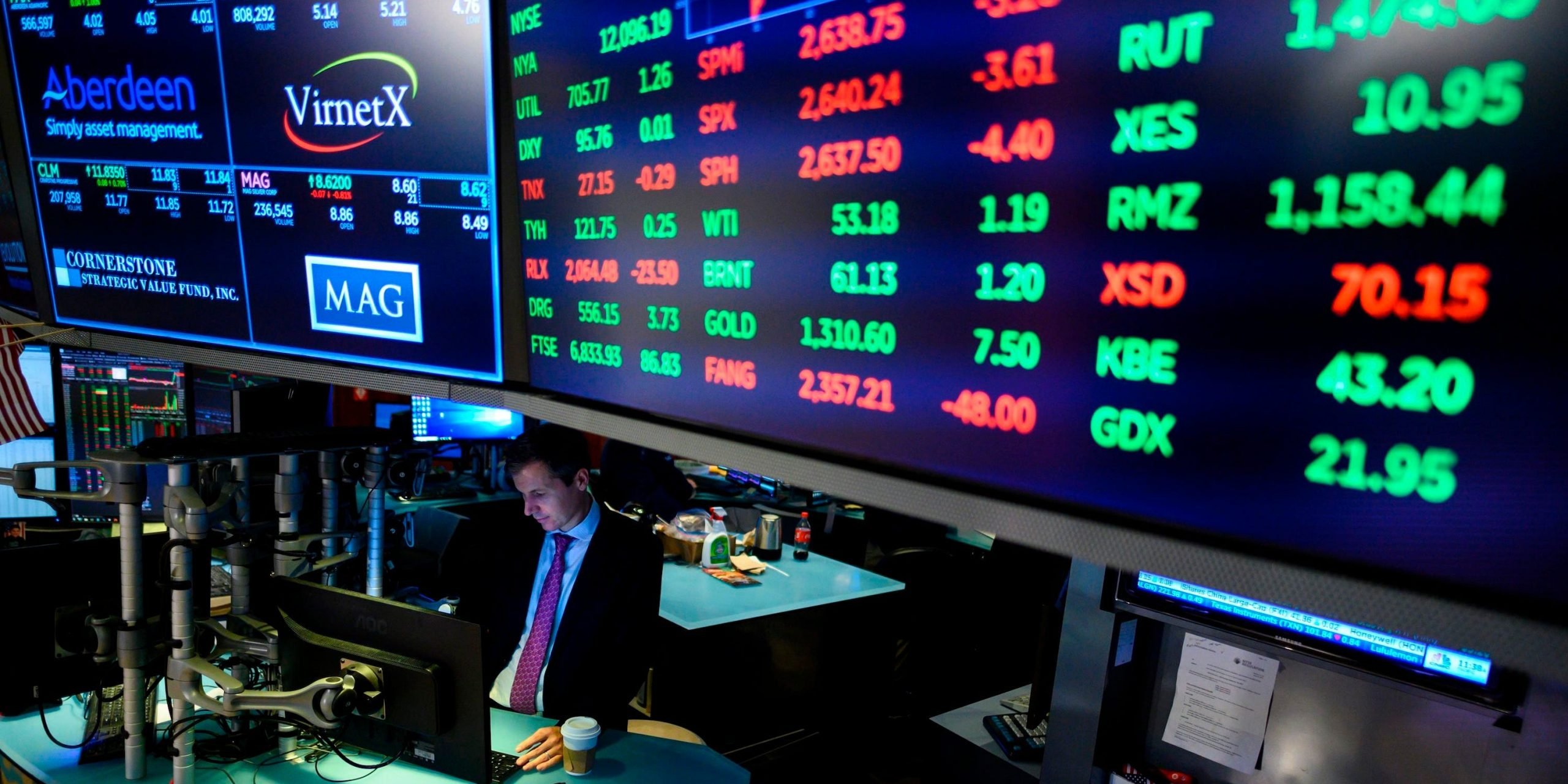
JOHANNES EISELE / Contributor/Getty Images
- Mid-cap stocks (“mid-caps”) are companies that have a market capitalization value between $2 billion and $10 billion.
- Mid-caps are usually moderately risky but generally stable companies that still have room to expand.
- Since mid-cap stocks often offer both dividends and price appreciation, they can balance investment portfolios between income and growth.
- Visit Business Insider’s Investing Reference library for more stories.
Mid-cap stocks in the market are a bit like the middle children in a family. They’re often overlooked.
While research analysts, money managers, and stock-picking pundits publish up-to-the-minute data on the performance of both giant corporations and small, up-and-coming companies, you often have to go digging for information about the mid-cap (short for “middle capitalization”) enterprises.
But this category of companies is actually made up of many reputable businesses and they tend to perform quite well. In fact, the S&P MidCap 400 Index, which tracks 400 middle capitalization companies, has outperformed both the S&P 500 (a group of the 500 large-cap companies) and the Russell 2,000 (an index of 2,000 small-cap companies) over the past 10, 15, and 20 years.
Are mid-caps a good investment for you? From market cap valuation to risk assessment, here’s what you should know about mid-caps.
What are mid-cap stocks?
Mid-cap stocks are those whose market capitalization value is between $2 and $10 billion.
They tend to be substantially sized companies with a solid business model and an established foothold in their respective market. Where large-cap companies are often huge, with a global presence, mid-caps are often national companies or more niche companies that are looking to expand.
Some of the better-known mid-cap companies include:
- American Eagle Outfitters, the clothing brand
- Dunkin' Brands Group, the parent company of Dunkin' Donuts
- First Solar, makers of solar panels
- Grubhub, a mobile food ordering application
- Tempur Sealy International, the mattress manufacturer
- Avis Budget Group, the car rental company
A mid-cap stock of today could well be a large-cap stock of tomorrow. It's often a company in its growth phase trying to take the world by storm. But a mid-cap company may also be yesterday's large-cap: A company that's lost some value with its market capitalization trending down.
Characteristics of mid-cap companies
The companies that comprise the mid-cap segment tend to have several characteristics in common.
- They're large - but not enormous. These companies are often well-established in their region or in their industry. But they're usually not too big to fail if there is a real threat to the business or if the market for their goods and services dries up.
- They often pay dividends. While large-caps get much of the attention from income investors, many mid-caps are doing well enough that they can share profits with stockholders. While they reinvest earnings back into the business, they can also pay out substantial dividends.
- They're fairly stable. Mid-caps don't usually have the same diversified business model or access to resources that help large-caps weather economic challenges and stock-market trends. Still, mid-cap companies typically have a track record of steady performance over a significant period of time - often years or decades. In the investment scheme of things, they're of moderate or middle (that word again!) risk.
What can investors expect from mid-cap stocks?
Mid-caps offer a bit of the best of both the small- and large-cap worlds.
While they do tend to be more volatile - and hence riskier - than large-caps, they also tend to provide more opportunity for appreciation than those stable-but-stolid behemoths. Like teenagers, they still have some growing to do.
On the other hand, compared to many small-caps, they are much more of a known quantity - hence, less subject to dramatic price drops on disappointing performance. Of course, since mid-caps are well-known and well-along in their business, they're much less likely to double or triple in value like a little undiscovered up-and-comer might.
Mid-caps are also more likely than small-caps to be the subject of a merger or acquisition. They're often the sort of revenue-rich enterprise a conglomerate would love to add to its stable, to quickly gain presence in a field or boost its bottom line.
It's the "story" that's perhaps most important to look at when analyzing a mid-cap stock: is it rapidly expanding, or poised for more growth? Is it maintaining its value? Is it declining? Understanding the trajectory of the company, together with its business model, can help you understand what to expect from it next.
The financial takeaway
Mid-cap stocks represent large, stable companies with market capitalizations between $2 and $10 billion. They tend to be companies that are well-established in their markets, regions, or industry sectors, but often still have room for substantial growth.
Mid-caps sit between small- and large-caps in terms of both risk and potential return. They're well-suited to investors who are comfortable taking on a moderate degree of risk, figuring the chance for substantial gains may be worth it. Since mid-cap stocks often offer both dividends and price appreciation, they can be an ideal way to balance a portfolio between income and growth.
